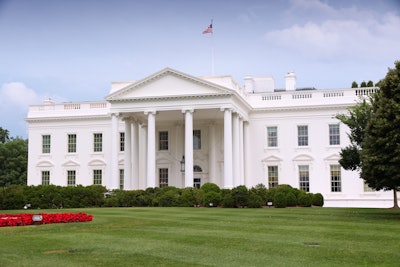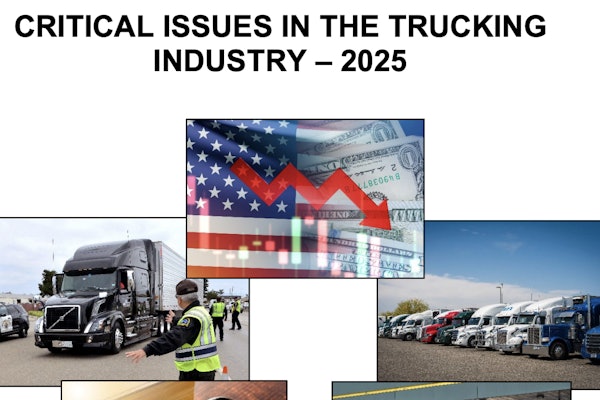
President Joe Biden Wednesday, April 24, announced a goal of creating a zero-emissions freight sector in the U.S. as part of efforts to reduce pollution and improve air quality.
Key to realizing that is the increased use of emissions-free vehicles, and the plan announced by Biden includes $1.5 billion to accomplish that goal. Biden's plan calls for:
- $1 billion from the Environmental Protection Agency for states, cities and Tribes to replace Class 6 and Class 7 heavy-duty vehicles, including school buses, refuse collection trucks and delivery trucks with emissions-free vehicles
- $400 million from the Department of Transportation to reduce air pollution caused by trucks at port facilities
- $72 million from the Department of Energy to create s "Super Truck: Charged" program to demonstrate how vehicle-grid integration enables depots and truck stops to provide affordable, reliable charging while increasing grid resiliency
"This new commitment to zero-emissions freight aligns with and supports President Biden’s existing goals for a carbon pollution-free energy sector by 2035 and for achieving net-zero emissions from the transportation sector by 2050," said a statement from the White House. "It also aligns with the Administration’s commitment to work with other countries to identify pathways and implementation actions that enable zero-emissions medium- and heavy-duty vehicles to reach 30 percent of new sales in 2030 and 100 percent of new sales by 2040."
The $1 billion in EPA funding will support infrastructure to charge, fuel and maintain heavy-duty zero-emission vehicles along with workforce development and training to get this work done, according to a statement from the White House. At least $400 million of the program’s funding will serve communities dealing with significant air pollution.
The Department of Transportation's Reduction of Truck Emissions at Port Facilities Grant Program invests in port electrification and efficiency improvements. This program aims to reduce pollution from idling trucks at our nation’s ports while modernizing infrastructure and strengthening supply chains, according to a statement from the Department of Transportation.
“When truckers spend hours idling at ports, it’s bad for drivers, bad for supply chains, and bad for nearby communities that feel the brunt of more polluted air,” said Transportation Secretary Pete Buttigieg. “The investments we are announcing today will save truck drivers time and money and help ports reduce congestion and emissions, while making the air more breathable for workers and communities.”
In announcing the program, a White House statement said, "The U.S. freight system is vital to our nation’s economy. Trucks, ships, trains, and planes move 55 million tons of goods worth more than $49 billion every day, across a vast network that is essential to how Americans live and work. But while industry has made progress on reducing emissions from this sector, freight movement continues to represent a significant share of local air pollution, increasing the risk of asthma, heart disease, hospitalization, and other adverse health outcomes for the millions of Americans, especially overburdened communities, who live and work near highways, ports, railyards, warehouses, and other freight routes. The transportation sector is also the largest source of climate pollution in the U.S., with trucks and buses comprising nearly a quarter of emissions from the sector. That’s why President Biden’s Investing in America agenda is supporting solutions that address harmful pollution, and has spurred $165 billion of private sector investments in zero-emission vehicle technologies."










